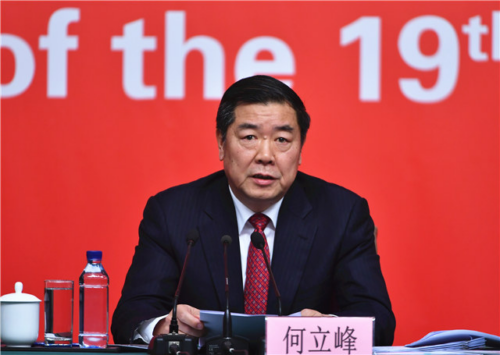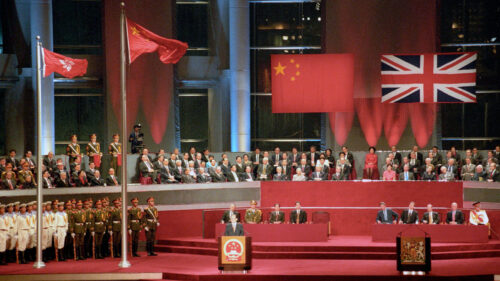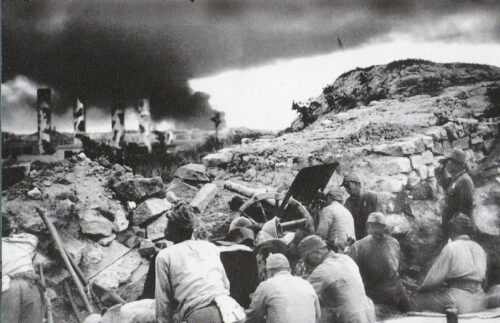Hong Kong and COVID-19: From ‘burning’ city to role model

Not long ago, Hong Kong was in turmoil, declared “burning” by some media outlets and a “failed state” by others. But during COVID-19, some of the same elements that helped coalesce the city’s protest movement have helped it mobilize against an infectious disease. There might just be lessons here for the rest of the world.

By all accounts, Hong Kong has fared comparatively well during the COVID-19 pandemic. Drawing on its experience from the 2003 SARS outbreak, this city of 7.4 million mobilized early, with people wearing masks and social distancing without needing to be told. As of this moment, it has an official infection count of less than 1,000, with only four deaths attributed to COVID-19.
It hasn’t been easy, but Hong Kongers know an infectious disease outbreak can be beaten back. Which is perhaps why, when it comes to the recent struggles of Western countries, Hong Kongers are watching with bewilderment and horror. For many, the scenes in Britain today offer a salutary lesson and a reminder to avoid complacency at all costs.
This would explain why the expatriate community has been called out in local press, as foreigners continue to visit bars and nightclubs during this outbreak. Granted, some of this criticism is unfair: The city’s watering holes are also popular with young locals, and many countries around the world have struggled to get everyone to practice rigorous social distancing. Hong Kong’s health authorities have also identified clusters of COVID-19 cases linked to venues popular with locals, e.g., karaoke bars and hotpot restaurants.
But the singling out of Hong Kong’s foreigners — mostly its white minority — by media outlets from across the political spectrum, including the pro-democracy Apple Daily, is itself suggestive of shifting political trends and cultural attitudes.
To see what we mean, we have to go back to the anti-government protests that began last summer. During this time, a handful of activists in Hong Kong argued, mostly from an anti-colonial perspective, that overt Western support for the protests may not necessarily be desirable. Now, amid the increasingly evident shortcomings of many Western states, a wider segment of Hong Kong’s population is beginning to more fully appreciate what the city can offer the rest of the world, instead of vice versa. At the same time, many Hong Kongers abroad have felt stigmatized for wearing masks, and reports of physical assault directed at people of East Asian descent in the West have understandably stirred unease and anger.
In the early days of COVID-19, Hong Kong activists on social media actively tried to persuade the international community to embrace mask-wearing, only to be summarily ignored. It’s only been in recent weeks that the rest of the world has caught up to what Hong Kongers have known all along: masks can limit infections. People are now calling Hong Kong exemplary in this pandemic, and the city’s public health experts have received international attention for their work. A city described as a “failed state” only a few months ago now appears to be something of a refuge amidst international turmoil. The city’s civil society is currently organizing donations for Britain’s NHS and beleaguered hospitals in New York.
What has perhaps gone under-appreciated is the extent to which Hong Kong’s successful pandemic response has been a bottom-up effort. Recent polling shows that a majority of citizens credit community response as opposed to government intervention. Many activists have remained highly skeptical of the government’s motives to allow the police to enforce a ban on public gatherings of more than four people, reflecting a degree of vigilance that is essential for the preservation of democratic values.
Hong Kong can serve as a model for how a robust civil society can both serve to hold governments to account and fill in the gap when political leaders are incapable of protecting their citizens.
The emphasis on a community-led response to COVID-19 contrasts sharply with the state-imposed interventions seen in much of Europe and America. In Hong Kong, the diffuse support networks that emerged over the course of last year’s protests have been redirected toward sourcing face masks for local residents. The pro-democracy district councillors swept into office in last year’s local elections have coordinated efforts to distribute imported face masks to marginalized groups, even as Carrie Lam’s administration has failed to ensure adequate supplies for worried citizens. Pro-protest activists have also urged the government to do more to help struggling businesses and their employees, highlighting the plight of the worst-affected industries. This community-led response has also seen local businesses voluntarily closing down or reducing their opening hours to encourage social distancing. Ironically, the city may have avoided a total lockdown thus far precisely because many citizens have been self-isolating on their own accord.
Hong Kong can also serve as a model for how a robust civil society can both serve to hold governments to account and fill in the gap when political leaders are incapable of protecting their citizens. In an era of “fake news” and widespread disenchantment with politicians, this form of grassroots solidarity is arguably more important than ever in ensuring responsible governance and countering disinformation. Like many urban centers around the world, Hong Kong has introduced restrictions on mass gatherings to combat the spread of the pandemic. While most protesters understand the need for these measures, there has been criticism of attempts by the police to cite the new public health measures to prohibit peaceful commemorative events or target restaurants owned by pro-protest entrepreneurs. Given the unprecedented reach of and intrusiveness of anti-pandemic legislation passed across the globe, this form of scrutiny is essential for the preservation of individual rights and liberties.
What’s more, Hong Kong has thus far mostly avoided the overt hostility toward foreigners that is now increasingly evident elsewhere But that doesn’t mean there isn’t reason to worry. There were reported instances of restaurants refusing to serve mainland China customers in the early days of the outbreak. With COVID-19 leading to a resurgence in racism and bigotry across the globe, there is real danger of the protest movement taking a xenophobic turn — not just toward Chinese immigrants and visitors, but also toward Hong Kong’s other ethnic communities. That would mark a troubling step backwards after the cross-ethnic solidarity built up over the course of last year’s protests.
The temptation to turn inward and stigmatize the “other” is particularly powerful in times of crisis, but this instinct stands against the liberal values that the protesters proclaim. Ultimately, Hong Kong’s distinctiveness is rooted in its past and present as a cosmopolitan, multicultural melting pot. It would be little short of disastrous for the pandemic to drive the protest movement in a nativist, insular direction at precisely the moment when liberal values are seemingly under threat everywhere.





